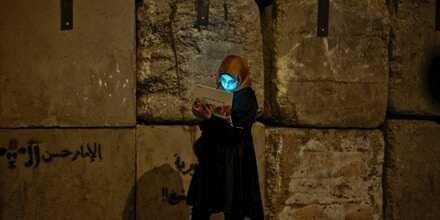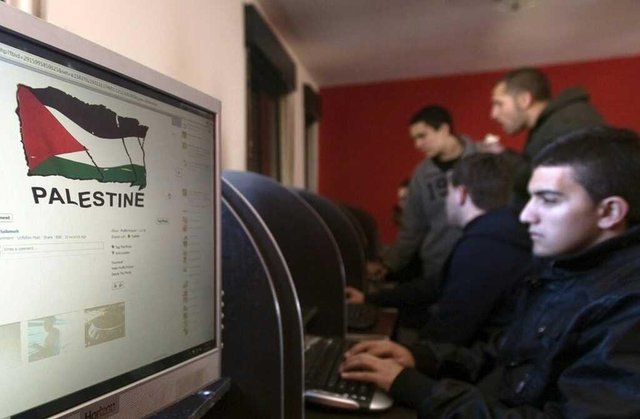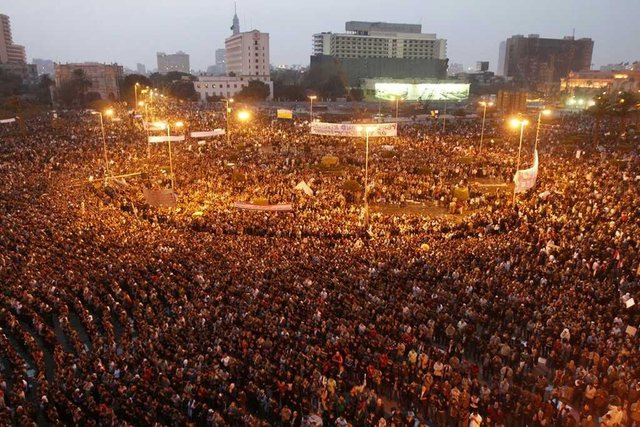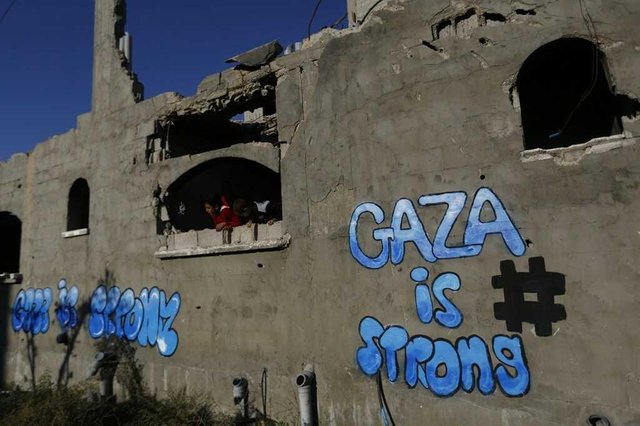NEW WARFARE INFORMATION
TEN YEAR BEFORE SMARTPHONE, the internet, and social media, philosopher Marshall McLuhan, who worked on media theory, predicted future world warfare struggled to use information. While World War I and World War II were waged using armed and mobilized economies, "World War III will be a guerrilla information war without division between military and civilian participation," said McLuhan, a prediction included in his 1970 book of devotions. , "Culture Is Our Business."
McLuhan's prediction may seem strange in his own time, but it seems very close to today's reality. Decades ago, entry barriers for broadcasting and publishing were so high that only established institutions could be involved in spreading the news. But over the past 10 to 15 years, ordinary people have been radically empowered with the ability to record, publish and broadcast information to millions of people around the world, at minimal cost.
The revolutionary impact of this new information environment - where individual individuals or networks can create their own mini-CNNs - transforms our society. The loss of gatekeeping authority held by inherited media institutions has opened up opportunities for long-pressured groups to be heard: Palestinians, African-American activists, feminists, environmental activists and dissident groups working within authoritarian societies can find various ways, not always without problems, must be heard.
This new media landscape also creates a world that is vulnerable to unprecedented levels of propaganda, conspiracy and disinformation. The epistemological chaos created by the global explosion of "news," some of the truths in question, has caused serious disruption both in politics and everyday life. But there are other areas of life that may be most seriously affected by the changing information landscape: armed conflict.

Propaganda and information warfare used to be the scope of state, military, and intelligence services. Today, even ordinary people have become important players in this campaign.
Propaganda and information warfare used to be the scope of state, military and intelligence services. Today, even ordinary people have become important players in this campaign. The battle over narration and information has become an integral part of modern war and politics; the role played by bloggers, activists, and "citizen journalists" in shaping narratives has proved important.
The examples quickly accumulate in the second decade of the 21st century. Citizen journalists and accidents activists helped change the course of history during the uprising in Egypt, Bahrain, Tunisia, Syria, and Libya - as well as during the 2014 Israeli war against the Palestinians in the occupied Gaza Strip. Very quickly, people who were once considered victims of war and political power have become empowered as political actors. During the 2014 Israeli bombing of Gaza and the 2016 Russian air bombardment of the rebel-held Syrian city of Aleppo, women and young people came to international attention on their renewal of the war zone, helping to wage a battle to shape global public opinion.
Unlike traditional information operations conducted by states, the narratives of ordinary people and activists benefit from a sense of authenticity and greater emotional connection. These currencies are always difficult to catch by the institution, but come naturally to individuals and activists. Social media's ability to bypass the traditional media gatekeepers also obscures the biggest obstacle to the marginalized voice being heard: political and corporate control over publishing.
"The strong institutions are still there and remain very strong, but there are other currencies that arise because of social media and the internet, which you might call authenticity or emotional appeal," said Matt Sienkiewicz, assistant professor of communication and international studies in Boston. College and author of "The Other Air Force: US Effort to Reform Middle Eastern Media Since 9/11."
"Everyone is focused on media producers in shaping public opinion, but it's really at the level of information distribution where barriers have traditionally been happening," Sienkiewicz added. "This is what social media has fundamentally changed. There is a lot of focus on the downside, with respect to the viral conspiracy and misinformation - but there are also reasons for optimism, as many stories that have been ignored before are now being heard. "
The emergence of online citizen journalism also further obscures the differences between participants and non-participants in the conflict, as well as activists and journalists. For those who lack proper media education, distinguishing truth from falsehood becomes an increasingly Sisyphean task.
Taking parts of the last few years, some authors have begun to examine the ways in which social media shapes our understanding and experience of modern political conflict and politics. "War in 140 Characters," by journalist and writer David Patrikarakos, and "World Digital War," by Haroon Ullah, a writer and former US State Department official, are both early attempts to understand the gravity of our current information crisis.
With the central lines of the armed conflict between the peacetime - between peace and war, combatants and civilians - social media has the potential to draw the whole world into a gray zone where the line between participants and non-participants in the conflict is unclear. While the last World War was a clear nation-state clash with uniformed soldiers, a new era of technologically controlled information war holds the potential to become so amorphous and encompasses everything that can seep into every aspect of society, altering political experience and war in the process.

Palestinian youth check their Facebook account at internet café in Ramallah city, West Bank on January 6, 2012.
THE WAR 2014 between Israel and the Palestinian factions in the Gaza Strip is perhaps the first war in which social media was successfully used as a radical power level by the weaker party. In previous wars between Israel and Palestine, the Israeli government's ability to manage access to the battlefield enabled it to help shape the war narratives, describing them as they pleased - as a war against terrorism. But with the proliferation of smartphones and social media accounts in Gaza over the past few years, these conflicts have finally been viewed as very different by various observers.
When the bombs rained down the Gaza Strip, following a pattern that included the killing and massacre of many ordinary people, the Palestinians rushed to social media to share their own narratives of war. The young men and women living on the Strip share images of real atrocities committed against civilians, along with frequent emotional renewals about their own experiences trying to survive the Israeli military offensive. In previous conflicts, most of these voices will never be heard. Live broadcast to the global public sphere of Twitter and Facebook, however, the story of the suffering and Palestinian resistance becomes impossible for the world to be ignored.
Writing in the Middle East Eyes on the role of social media in conflict, Yousef al-Helou reflects:
Even when the power goes out, citizen journalists managed to send pictures of dead bodies, destroying the environment and injured people to the outside world. Photography has always been a powerful force, but the Gaza conflict was one of the first wars to be photographed mainly by amateurs and social media platforms, allowing the images to spread far and wide with just a click of a button, helping the Gazans win hearts and minds , and then caused unprecedented anger against Israel. In demonstrations around the world, the photos were enlarged and carried by protesters, demanding that their respective governments take action to stop the Israeli offensive.
As public anger against war widened, even the media establishment in the United States was forced to pay attention to the experience of the Palestinian conflict. In response to the growing public relations disaster caused by images of Gazan civilians killed, Israeli Prime Minister Benjamin Netanyahu accused the Hamas government in the region of using "Palestinians who died politically for their purposes" - a statement that did little to quell the international outrage over civilian deaths.
In military terms, there is no real balance between the two parties. By the time the conflict ended, more than 2,100 Palestinians had been killed, compared to only 66 Israelis. The physical infrastructure of the besieged territory suffered severe damage, with Israeli attacks that paralyze the source of water and electricity for Gaza residents. Despite their advantages in brute strength, the one-sided death toll, and the destruction of only one-sided territory, it is not clear that Israel won the conflict. In the battle over the narrative of war - it is essential in a conflict whose power dynamics are deeply influenced by outside actors - the Palestinians managed to win significant traction for their cause.
Instead of another case of the Israeli military attacking the formless Islamic terrorist group, a controversy about the conflict spread globally. In this version of events, Israel is not a democratic country that waged a war on self-defense against terrorists, but US-backed military giants beat people in poor territories. The death toll appears to prove to the world that disproportionate force has been imposed on a weak and isolated region.
"During the Protector Edge" - the name the Israeli military gave to the campaign - "the people who suffered most were Palestinians, under siege from Israel's superior military power," Patrikarakos wrote in his book. "This is the democratization of the wartime narratives in action, and it only benefits one side: Palestine."
During the war, there was nothing more symbolic of the changing power dynamics of Farah Baker, a 16-year-old Palestinian girl who came to international attention for her social media updates about life in Gaza. Baker is not tied to any political group, and his perspective on war is a private matter. But the presence of his social media catapulted him to global attention and told the story of Palestine to the world in an emotionally resonating way. It also empowers Baker as a political actor, something he never suspected before and that will never happen in the previous conflict.
During the war, there is nothing more symbolic of the changing power dynamics of Farah Baker, a 16-year-old Palestinian girl who came to international attention for her social media updates about life in Gaza.
Usually, a teenage girl who lives under airstrikes will be regarded as an observer, at best or a victim, at worst. But thanks to his Twitter feed, where he shares his fears and efforts to maintain a normal life in the middle of a war, Farah becomes an important part of the Palestinian effort to influence global opinion about the conflict.
"At the age of sixteen, Farah understands, even if instinctively, the importance of social media in wartime, especially to those who can not stand the Palestinian life," Patrikarakos wrote. "He understands the power it gives to an individual and an individual network, a power that was previously impossible."
In Gaza, as in Syria and Ukraine, there are several examples of alleged false suffering and cruelty spreading for propaganda purposes. Here too, social media has changed the way conflict is perceived. Through the ability of social media to provide accounts from multiple separate sources in the field, verify information, and share evidence, outside observers can better evaluate the credibility of reports from the field.
During the Gaza conflict, the Israeli Defense Forces attempted to dispute the onslaught of Palestinian journalism with its own information war, spreading infographics and videos intended to show Israel's side of the story. In the end, the Israelis are in a disadvantage. The personal authenticity of the tech-young tech Gaza people resonated more naturally by observing the audience than the official statements and flashy messages issued by Israeli military officers, an indelible message with an exiled bureaucratic face.
The impact of this disparity is very important. In a column on Foreign Policy after the war, entitled "On the Defeat of Israel in Gaza," international relations scholar David Rothkopf reflected on the global impact of the chaos scene in Gaza, including images of young people killed on the beach. by Israeli military forces. "There is no Iron Dome" - a sophisticated and expensive Israeli missile defense system - "which can undo the images of suffering and destructive destruction into our memories or justify the destruction of Israeli legitimacy derived from such naughty slaughter," Rothkopf wrote.
While President Barack Obama's presidential administration stood by Israel during the conflict, calling for restraint from both sides, two years later, as he prepares to leave office, the United States takes a significant step to distance itself from Israel at the United Nations by allowing an anti settlement settlement to pass - a rare example of US access to public condemnation of Israeli actions. While far from the sea-change in America's attitude to the conflict, this move reflects the growing discontent with Israeli actions in the United States, which, though not shared by the Trump administration, is echoed by high-ranking officials.
In his own little way, with his tweets and updates during the war, Farah Baker has played a role in changing the narrative and forcing the world to wrestle with the Palestinian narrative of the conflict.
"I have no ability to carry weapons and I will never kill anyone, so my only weapon is to broadcast the truth and let people know what is going on here," Baker told Patrikarakos in an interview at his home in Gaza. "I'm more effective than I ever imagined, because of the number of followers I get and because so many people tell me, I've changed their mind [about war] and opened their eyes."

Egyptian protesters took part in a demonstration on February 1, 2011 at Cairo's Tahrir Square when a large wave of protesters flooded Cairo for the biggest outpouring of anger in their attempts to overthrow President Hosni Mubarak's regime.
During the awakening of awareness of the enthusiasm of the Arab Spring revolution in 2011, observers noted how effectively social media has been used as a means of organizing by young activists. While it would exaggerate the case to connect the revolution itself with social media (as did some of the more breathless analysis at the time), the impact of online social networks, mobile phones, and new satellite television stations in mobilizing and informing people in this society can not be denied. The idea of young people using social media to overthrow dictatorships played a role in the "tech-utopianism" narrative, still in vogue at the time, stimulating the idea that future political change might be regulated from below through the power of liberating the internet.
The bleak years that followed the early insurgency have largely eliminated this narrative. While liberal activists are adept at organizing online, so are political Islamists and jihadist groups. These groups are funded better, more organized, and already have the experience of operating quietly - using the latest technology for propaganda, recruitment, and networking. Over time, Islamist groups such as the Muslim Brotherhood, as well as the jihadists, who moved into the vanguard of the revolution, ousted liberal activists who initially captured the world's imagination.
"The Digital World War" is an analysis of how opposition movements, and especially Islamists, have used social media as a means of fighting against established governments. Haroon Ullah is a former State Department official and Pakistani Jamaat-e-Islami movement expert. Unlike Patrikarakos's book, "The Digital World War" is a quiet academic analysis of how social media and other new technologies alter the dynamics between the central government and the opposition movement, both Islamist and liberal. But Ullah's work also discusses the essence of how social media promotes the dynamics of traditional power governing war and politics.
Perhaps the most unstable aspect of new technology is the way they have the potential to increase the pace of political change. The youth-led revolution in Egypt and Tunisia began and ended in a matter of weeks, overthrowing the government that has existed for decades. Although both countries have suffered from long-standing structural problems, the sparks for both rebellions are ignited on individual anger - corruption and police brutality - that are spreading and popularized rapidly through social media. Although many observers later joined the protests for other reasons, the speed and scale initially set by the people is unlikely to happen in an era before mobile phones and the internet.
Perhaps the most unstable aspect of new technology is their way of potentially increasing the pace of political change.
The speed of these movements, however, makes it difficult to establish a sustainable order of collapse of the old regime. While it is true that online mobilization plays a role in bringing down Egypt's powerful man Hosni Mubarak and the Tunisian dictator, Zine El Abidine Ben Ali, it also gives little time for real leaders to emerge or for a political platform to be agreed upon. While the people who took to the streets united in their anger over injustice and their opposition to the old order, they had very different ideas about the future of their country. When the regime collapsed, the only party well established to take advantage was those who were in harmony with the long-suppressed Muslim Brotherhood.
"It is not a matter of Islam being the hallmark of the identity of Tunisia - despite the Islamist claim," Ullah wrote, regarding the Tunisian revolution and the ensuing election of the liberal Islamist party Ennahda. "Instead, victory is the natural result of the inevitable schism between the nature of the revolution and the preparedness of Islamists for gain power. "
Social media is not the first information technology that has helped drive revolutionary change. Radio, telegraph, and even the printing press all helped to accelerate the socio-political transformation of the past, which later became known to help assist Christian Reformation.
More recently, the cornerstone of the 1979 Iranian Revolution was built with the help of a relatively new technology: Speeches popular by the revolutionary leader, Ayatollah Ruhollah Khomeini, recorded and copied to tapes, which are then quickly replicated and distributed. Unlike social media movement to close the cycle between anger and protest to a matter of days, however, it takes hard work over the years media Khomeini to help build mass support for the opposition movement in Iran. At the time of the Iranian people eventually go to the streets against the Shah - are motivated by many different ideological currents - Khomeini was a spiritual leader of the famous and popular in opposition. When the monarchy falls, it is well placed to marginalize its ideological rival and consolidate the clerical power over the land.
The difference between the Iranian uprising and the leaderless revolution today is vast and leads to one of the major pitfalls of Internet activism. Online organizing and propaganda can be legitimately useful for destabilizing regimes, especially the very authoritarian ones who need to tightly control the flow of information. But because of the speed with which it can accelerate change, it is less useful to build the networks and organizations that are needed to fill the gaps created when the old government actually falls.
"When there is no single leader who focuses the political movement - Khomeini, Mandela, Lenin - there may be a faster revolution than before, but there are fewer revolutionary outcomes and scenarios," Ullah wrote. "So when dictatorships - by definition and establish the only and the strongest institutions in a country - are overthrown by rebellions like the Arab Spring, what comes to the place of power vacuum is not determined by those who have created it.

Palestinian children look out of a crumbling building window carrying graffiti on the outskirts of Al-Shejaiya City in Gaza City on December 25, 2014
In a 2007 paper entitled "From Networks and Nations," John Arquilla, a new pattern expert of warfare at the Naval Graduate School, argues that a loosely divided global and regional network, made possible by the Internet, has begun to challenge authority. nation-states in the same way that nation-states have challenged the authority of the kingdom a century earlier.
In recent years, transnational militant groups, civil society activists, and hackers have been able to inflict losses on the country's slow enemies, in part by exploiting the speed of connectivity and communication provided by the internet. "The networks come to push, push, and confront. They came to solve the supranational problems of injustice, inequality, and environmental degradation so that a nation-based capitalist system will never, in their view, deal adequately, "Arquilla writes. "In short, the network came to change things, and they came not in peace but with the sword."
In recent years, transnational militant groups, civil society activists, and hackers have been able to inflict losses on slow state enemies, in part by exploiting the speed of connectivity and communication provided by the internet.
The 21st century has seen the emergence of "gray zone conflict," in which armed, political, and media forces are increasingly blurred, such as the 2014 war between Israel and the Palestinians. The gray zone conflict is rarely an interstate war but more likely to be a civil rebellion, a conflict between state and militant groups, and domestic uprisings. As the scholars David Barno and Nora Bensahel have described, these conflicts "involve some aggression or the use of force, but in many ways their characteristic is ambiguity - about the final destination, the participants, whether international agreements and norms have been violated , and the role that military forces should play in response. "
In this ambiguous environment, information wars launched online by activist groups and individuals play a critical, sometimes even definitive, role. Because the dominance of information flows held by nation-states is evaporating, their ability to control the trajectory of conflict by managing international opinion and maintaining domestic authority also erodes.
The threat of this change, as well as the political impact of viral information errors, has led to calls from several angles to regulation and greater engagement by technology companies in placing curbs on online speech. Although enhanced media education for the general public may be necessary, any nostalgia for an earlier era when information is controlled by some hegemonic media institutions very misplaced.
"If we allow the existing problems with social media and new technologies to be used as an excuse to overthrow it, it will be a major crime," Sienkiewicz said. "The old media environment in which billions of people have little access to tell their story - where the whole class of people are effectively perceived by media agencies as unfit to report - is not something we should want to go back to. We have to tackle the existing problems with new media, not try to turn back the clock and consider these all failed experiments. "
For better or for worse, thanks to social media and smartphones, the version of the "guerrilla war of the world" predicted by Marshall McLuhan - a war of depictions of information in states, military, activists, and ordinary people of equal size - exists. The consequences tend to change politics, conflict, and daily life for future generations. McLuhan himself stated that survival in this new world would be possible only through the coverage of conscious change, rather than backing into reactionary policies.
"The new technological environment generates the greatest pain among those least prepared to change their old value structure," he said, in a 1969 interview with Playboy Magazine. "When an individual or social group feels that its entire identity is threatened by social or psychic change, its natural reaction is to attack with defensive anger."
"But for all their lamentations, the revolution has taken place."
Top photos: A veiled girl protesting against the Morsi government uses her laptop further than the wall that should protect the presidential palace in Cairo, Egypt on December 11, 2012.
Ini informasi yang sangat bagus sekali...dan saya sangat prihatin atas kejadian di Palestina kemarin
Informasi yang sangat bagus untuk dijadikan @informatiomwar...
Saya sangat suka dengan post anda
Terima kasih atas kunjungan kalian..
Saya sangat menghargai komentar kalian.
Curated for #informationwar (by @truthforce)
Removed vote because of plagiarism.